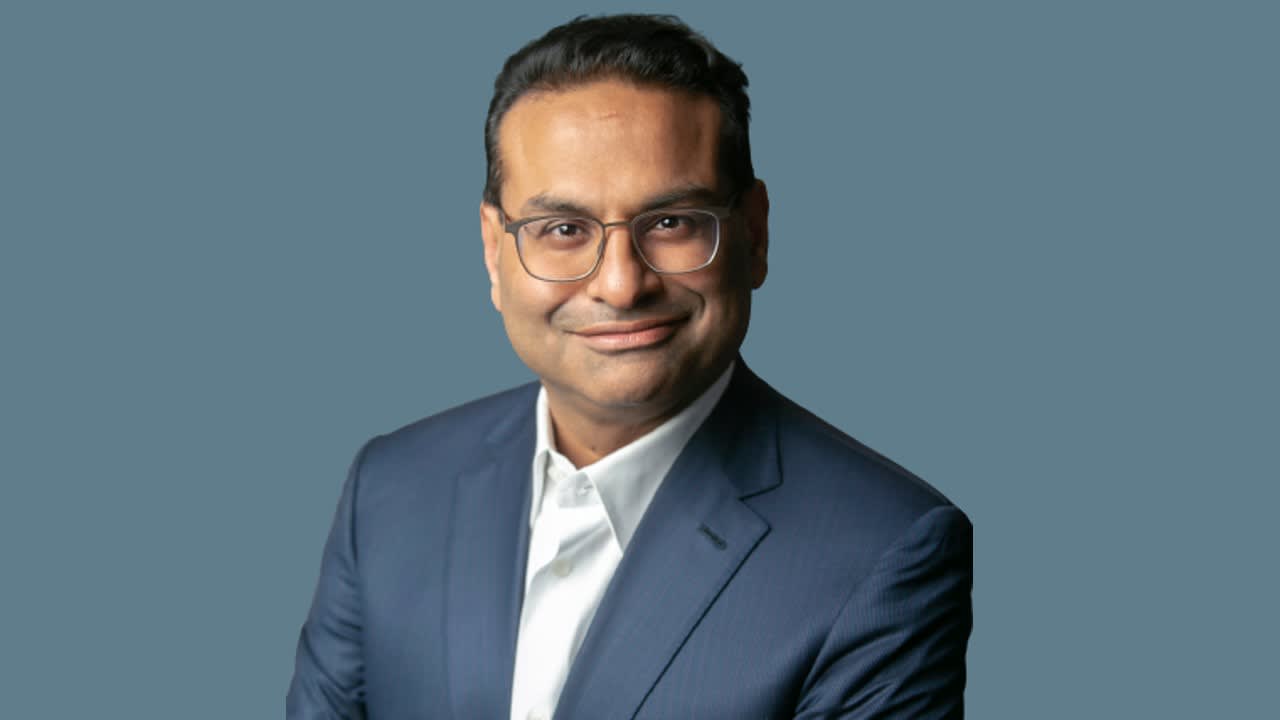Laxman Narasimhan’s Leadership Journey

Laxman Narasimhan, the current CEO of Starbucks, has a distinguished career marked by a blend of global experience, strategic vision, and a deep understanding of consumer behavior. His path to the helm of this iconic coffee giant is a testament to his ability to navigate complex business landscapes and drive growth.
Early Career and Key Milestones, Starbucks ceo laxman narasimhan
Narasimhan’s career began at PepsiCo, where he spent 12 years in various leadership roles across different regions and functions. He honed his skills in marketing, strategy, and international business development. His early experience at PepsiCo provided him with a strong foundation in building global brands and understanding consumer preferences.
- In 2001, Narasimhan joined the global consulting firm McKinsey & Company. His time at McKinsey exposed him to a diverse range of industries and business challenges, further sharpening his analytical and strategic thinking abilities. He worked on projects for clients in various sectors, including consumer goods, retail, and technology.
- Narasimhan joined Reckitt Benckiser in 2012 as the Global President of the company’s health and nutrition division. He led the business to significant growth and expansion, successfully navigating the challenges of a dynamic and competitive market.
- In 2019, he was appointed CEO of Reckitt Benckiser, where he spearheaded a transformation strategy to streamline operations, enhance innovation, and improve customer engagement. This period marked a crucial step in his leadership journey, demonstrating his ability to lead a large global organization through strategic change.
Leadership Style and Comparison to Howard Schultz
Narasimhan’s leadership style is characterized by a data-driven approach, a focus on strategic execution, and a commitment to fostering a culture of innovation. He is known for his collaborative leadership, engaging with teams and seeking diverse perspectives to inform decision-making.
- While both Narasimhan and his predecessor, Howard Schultz, share a passion for Starbucks’ mission and its core values, their leadership styles differ in certain aspects. Schultz is known for his charismatic and visionary leadership, often leading with a strong emotional connection to the brand and its employees. He emphasized the importance of building a strong community around Starbucks and creating a unique customer experience.
- Narasimhan, on the other hand, takes a more analytical and strategic approach. He focuses on driving growth and profitability through operational efficiency, innovation, and a deep understanding of market trends. While he emphasizes the importance of Starbucks’ culture and its impact on the customer experience, he also prioritizes data-driven decision-making and a focus on long-term sustainability.
Impact of Narasimhan’s Leadership on Starbucks
Narasimhan’s leadership has already begun to shape Starbucks’ direction. He has emphasized the importance of digital innovation, expanding Starbucks’ reach through technology and enhancing customer engagement through personalized experiences. He has also focused on improving operational efficiency and streamlining processes to drive profitability.
- Narasimhan’s vision for Starbucks is rooted in the belief that the company can continue to be a leader in the coffee industry by adapting to evolving consumer preferences and leveraging technology to create a seamless and personalized customer experience. He is committed to driving growth while maintaining Starbucks’ core values and its commitment to social responsibility.
Starbucks’ Strategic Direction under Narasimhan

Laxman Narasimhan, the current CEO of Starbucks, has Artikeld a clear strategic direction for the company, focusing on innovation, customer experience, and global expansion. His vision aims to solidify Starbucks’ position as a leading global coffee brand while adapting to evolving consumer preferences and market trends.
Starbucks’ Strategic Priorities under Narasimhan
Narasimhan’s leadership has brought about a renewed focus on several key strategic priorities:
- Innovation: Starbucks is investing heavily in research and development to create new products and experiences. This includes exploring new coffee varieties, expanding its food offerings, and developing innovative brewing methods. For example, the company has introduced new cold brew options, nitro cold brew, and plant-based milk alternatives to cater to diverse consumer preferences.
- Customer Experience: Starbucks is committed to providing a seamless and personalized customer experience across all touchpoints. This includes enhancing its mobile ordering and payment capabilities, offering personalized recommendations, and creating inviting store environments. The company is also focusing on improving its customer service and resolving issues promptly.
- Sustainability: Starbucks is dedicated to sustainable practices throughout its supply chain, from sourcing ethically produced coffee beans to reducing its environmental footprint. The company has set ambitious goals for reducing waste, conserving water, and promoting ethical sourcing. For example, Starbucks aims to achieve net-zero emissions by 2030.
- Global Expansion: Starbucks continues to expand its global footprint, entering new markets and strengthening its presence in existing ones. The company is focusing on developing markets with high growth potential, such as China and India. This expansion strategy involves adapting its products and services to local tastes and preferences while maintaining the core Starbucks brand experience.
Alignment with Long-Term Goals
Narasimhan’s vision aligns seamlessly with Starbucks’ long-term goals of becoming a truly global brand and achieving sustainable growth. By prioritizing innovation, customer experience, sustainability, and global expansion, Starbucks aims to maintain its leadership position in the coffee industry while addressing evolving consumer needs and market dynamics.
Challenges and Opportunities for Starbucks: Starbucks Ceo Laxman Narasimhan

Starbucks, a global coffeehouse giant, faces a complex landscape of challenges and opportunities as it navigates the evolving consumer landscape and market dynamics.
Challenges Facing Starbucks
Starbucks confronts several significant challenges in the current market landscape.
- Intense Competition: The coffee industry is highly competitive, with numerous established players and emerging brands vying for market share. Starbucks faces competition from local coffee shops, specialty chains, and fast-food restaurants offering coffee. This competition intensifies price pressure and necessitates continuous innovation to maintain a competitive edge.
- Rising Costs: Starbucks faces increasing costs for raw materials, labor, and rent. This pressure on margins necessitates strategic pricing strategies to balance profitability and affordability for consumers. Rising costs also necessitate operational efficiency and cost optimization measures.
- Changing Consumer Preferences: Consumer preferences are constantly evolving, with a growing demand for healthier and more sustainable options. Starbucks must adapt to these trends by introducing new products, embracing plant-based alternatives, and emphasizing ethical sourcing practices.
- Technological Disruption: The rise of digital ordering and delivery platforms poses challenges to Starbucks’ traditional store model. Adapting to these trends requires investment in digital infrastructure and optimizing the customer experience across various channels.
- Economic Uncertainty: Global economic conditions can impact consumer spending and affect Starbucks’ revenue. Economic downturns can lead to reduced spending on discretionary items like coffee, necessitating strategies to navigate economic volatility.
Opportunities for Growth and Expansion
Despite the challenges, Starbucks has significant opportunities for growth and expansion.
- Global Expansion: Starbucks continues to expand its global footprint, targeting emerging markets with high growth potential. This expansion offers access to new customer bases and drives revenue growth.
- Digital Innovation: Starbucks can leverage technology to enhance customer experience, streamline operations, and personalize offerings. This includes mobile ordering, personalized recommendations, and digital loyalty programs.
- Product Diversification: Expanding beyond traditional coffee offerings into new categories like tea, cold brew, and plant-based beverages caters to evolving consumer preferences and creates new revenue streams.
- Sustainability Initiatives: Consumers are increasingly prioritizing sustainability, and Starbucks can leverage this trend by focusing on ethical sourcing, reducing waste, and promoting environmental consciousness. This enhances brand image and resonates with environmentally conscious consumers.
- Partnerships and Acquisitions: Strategic partnerships and acquisitions can provide access to new markets, technologies, or customer bases. Starbucks can leverage these collaborations to enhance its competitive position and accelerate growth.
Potential Risks and Uncertainties
Starbucks faces potential risks and uncertainties that could impact its future.
- Geopolitical Instability: Global political events and economic instability can disrupt supply chains, impact consumer spending, and affect Starbucks’ operations in various regions.
- Regulatory Changes: Changes in regulations regarding food safety, labor practices, or environmental standards can create compliance challenges and impact Starbucks’ operations.
- Cybersecurity Threats: Starbucks relies heavily on technology, making it vulnerable to cybersecurity threats. Data breaches or system failures can damage brand reputation and disrupt operations.
- Competition from New Entrants: The coffee industry is constantly evolving, with new players entering the market. These new entrants can disrupt established players and challenge Starbucks’ dominance.
- Changing Consumer Behavior: Consumer preferences are dynamic, and shifts in behavior can impact Starbucks’ offerings and sales. Adapting to these changes is crucial for maintaining relevance and customer loyalty.
Starbucks CEO Laxman Narasimhan faces a challenging market environment, with consumers increasingly seeking out alternative dining experiences. This trend is evident in the strong performance of cmg stock , which reflects the growing popularity of Chipotle Mexican Grill. Narasimhan’s strategy for Starbucks will need to address this evolving landscape, emphasizing innovation and customer loyalty to maintain its competitive edge.
Starbucks CEO Laxman Narasimhan’s leadership has been met with mixed reactions, with some praising his focus on innovation and others questioning his strategic decisions. While navigating the complexities of the global coffee giant, it’s interesting to note how other leaders have navigated similar challenges.
For instance, Brian Niccol, CEO of Domino’s Pizza, has achieved significant success by focusing on digital transformation and customer experience. Brian Niccol’s wiki provides valuable insights into his leadership style, which may offer valuable lessons for Narasimhan as he continues to shape Starbucks’ future.